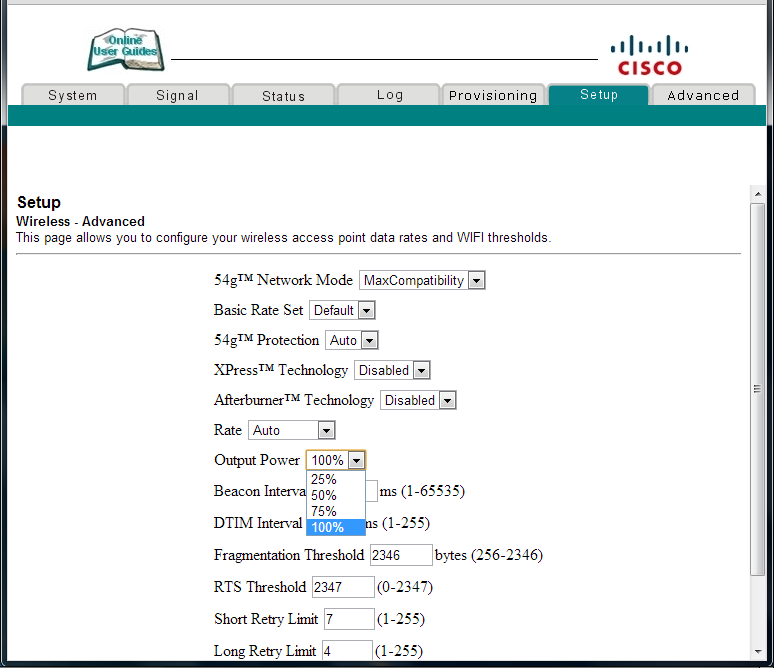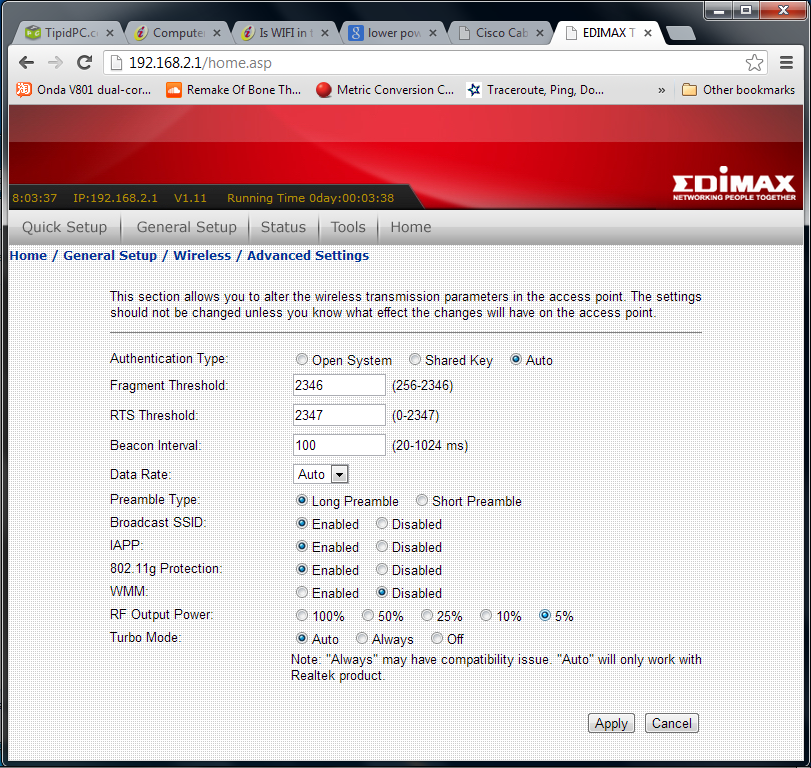maglalis man mo....mag-wifi o dili...patay man gihapon ta padung....
Results 21 to 30 of 78
-
07-08-2013, 08:01 PM #21
Last edited by gaspar_73; 07-08-2013 at 08:03 PM.
-
07-08-2013, 08:28 PM #22
same question : is MCWD water safe for human consumption?
is the air you breath in cebu city pure and safe?
is using your cellphone safe?
>we will pay in great price for the technologies use.
and having none does not make you any safer.
...and even electric transmission line emit radiation
-
07-08-2013, 09:18 PM #23
ang pag tubag lang gani nimo sa imong phone radiation na kaau na, samot na ug naka unli call LOL...
O.T lang unsaon diay pag pa hinay sa power sa imong wifi lower the transmitted frequency? or naay option gyd ana. pasensya na karon pako ka dungog pwd diay na ma lower ang iyang power da.
-
07-08-2013, 09:58 PM #24
TS: you should probably stop using cellphones too.
University of California, Irvine June 2008
EH&S; Radiation Safety Division
WHAT IS WI-FI AND IS IT SAFE?
Wi-Fi is an acronym for “wireless fidelity” and it refers to a wireless network for computers that uses
radiofrequency radiation for communication just like cell phones and two-way radios (walkie-talkies) do.
Communication across a Wi-Fi network is very similar to two-way radio communication:
1. A computer's wireless adapter translates data into a radiofrequency signal and transmits the data using an antenna to a nearby wireless router.
2. The wireless router receives the signal and decodes it. It sends the information to the Internet using a wired Ethernet connection. The Ethernet is a widely-used local area network (LAN) technology, with a local area network referring to a wireless computer network covering a small geographic area such as a home, an office, or a school.
3. The process also works in reverse, with the router receiving information from the Internet, translating it into a radiofrequency signal, and then sending it via an antenna to the computer’s wireless adapter.
Since Wi-Fi systems emit high-frequency electromagnetic radiation (at either 2.4 GHz or 5 GHz, with a GHz [gigahertz] being a frequency of one billion cycles per second), some concern has been raised regarding the safety of using a Wi-Fi system.
But these systems generally emit at a very low power -- typically about 0.1 Watt emitted from both the computer antenna and the router antenna. The power falls off very rapidly beyond a few inches from the antennas. In comparison, cell phones emit between 0.6 Watts and 3 Watts (typically at about 1 Watt), generally at 1.9 GHz.
There is a good deal of controversy nowadays about potential health effects caused by Wi-Fi radiation. Currently, it is believed by most scientists that Wi-Fi radiation exposure is safe for most people with the possible exception being small children exposed for long periods of time.
Although no health effects in children have been identified, it is recommended that children not sit for hours daily with a Wi-Fi laptop on their laps; placing the computers on a table is much better. The same thing goes for cell phone use by children -- use is acceptable, but spending hours a day on a cell phone is discouraged as a precautionary measure even though definitive health effects have not been observed in studies.
Of course, the exposure to Wi-Fi radiation is somewhat additive if a person is in a room full of others on WiFi. But since the radiation intensity drops off so rapidly with distance from the Wi-Fi emitting source (e.g., the laptop antennas), most of a user's exposure is from his/her own system unless other users are within a few feet away.
In conclusion, exposure to Wi-Fi radiation is presently considered to be very safe. Studies on possible health effects caused by long-term Wi-Fi (and cell phone) radiation exposure continue to be conducted. Some good websites for further reading regarding potential Wi-Fi radiation health effects are listed below:
BBC NEWS | Technology | Wi-fi health fears are 'unproven'
http://www.redherring.com/Home/3752
BBC NEWS | UK | Magazine | Wi-fi worry
-
07-08-2013, 10:16 PM #25
-
07-08-2013, 10:44 PM #26C.I.A.

- Join Date
- Jul 2010
- Gender

- Posts
- 2,847
-
07-08-2013, 11:02 PM #27
@keropi - bro murag dili tanan naay ingon ana nga feature sa router cguro kay kaning ako-a karon gamit cisco E900 nag tuyok2x nako wala koi nakita..paeta,,
pero salamat kaau sa info..
-
07-08-2013, 11:13 PM #28
-
07-09-2013, 07:28 AM #29
Sakto man tanan mga answer diri.. yes makadaot jud ng wifi pero useless na kaau kung imo na patyon, gipalibutan na ta ug mga radiation nga kusog pa sa wifi. GSM, Satelite TV, Mobile Broadband pakapin pa ng mga TV and Radio station na thousand2x na ang power. Bisan ug naa ka sa sulod sa imong balay still dangerous gihapon. So, ganahan pa kaha ka mo patay sa imong wifi ana?...
-
07-09-2013, 07:55 AM #30
^ sakto gyud ka bro, mao na'y fact... pero, if naa sa duol ang strong source, naa'y uban na sensitive then ang uban kay less sensitive... nothing to worry ning wifi signal sa balay labi na dili sensitive ang individual. lain2x man ug threshold level ang isa2x nato...
Advertisement
Similar Threads |
|




 Reply With Quote
Reply With Quote




